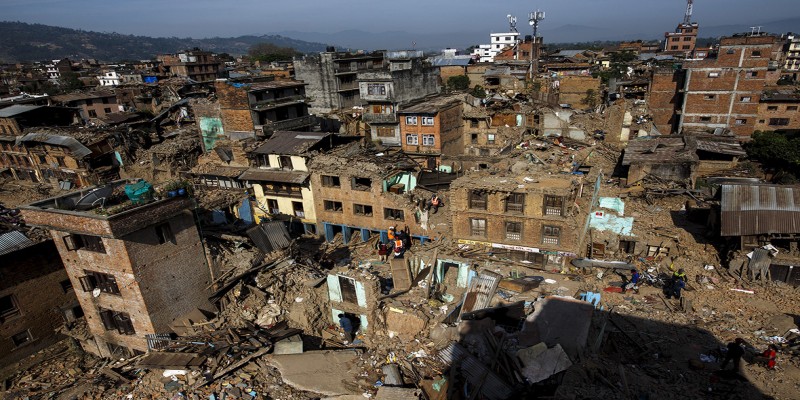
Media Monitoring of #NepalEarthquake - May 6
12 days since the earthquake and the media coverage gradually shifting gears focusing on rebuilding rather than immediate relief efforts. With hardly any news on rescue of survivors as it has been almost two weeks since the incident, most of the media coverage deal with people’s reactions – raising spirits with the message of Nepal Bounces Back; efforts to prevent disease outbreaks by development organizations and a positive initiative of focus on education with schools gradually opening, conducting classrooms at tents. Major highlights of media coverage:
Relief and Rescue Efforts
As an additional support, China is sending additional IL 76 helicopters to support the relief operations. These helicopters will be used to carry relief materials such as tents, generator and food items, as according to Setopati. On the other hand, other foreign rescue teams are gradually returning following government’s request. Nepal Army reported that 498 military personnel returned on Tuesday belonging to France, Switzerland, Germany, Britian, Belgium, Canada, the Netherlands, Poland, Spain, Turkey, US, Pakistan and India. Nepal Army statistics reveal that a total of 4050 rescues and 129 sniffer dogs from 34 countries arrived to assist the government since April 25. In order to focusing on rebuilding efforts, Republicareports that Chaudhary Group has pledged Rs. 250 million for the support of quake victims.
Relief Web reports that Urban Search and Rescue Team (USAR) has been working extensively in Nepal with 55 teams coordinated by USAR Coordination Cell including 17 international classified teams (INSARAG) totaling 1872 rescue and medical personnel and 118 search dogs. This team worked in19 sectors with full assessments and search and rescue completed. As a result of their great effort, 16 lives were saved, 1182 were provided with medical assistance and178 bodies were recovered in the rescue operations.
As a public health action to prevent epidemic outbreak as well as ensure adequate nutrition for the children, UNICEF is providing 13.5 million sachets of micronutrient powder to young children and also providing clean supply water to 124,482 people with the support of other agencies.
Reactions
Indian media criticism of negative reporting of earthquake hasn’t stopped with CNN report highlighting strong criticism of Indian media ‘insensitivity’ of turning earthquake coverage into a public relations exercise for the Indian government. On the other hand, Hindustan Times, another Indian media has been posting some really interesting news on the earthquake such as an experience of an Indian facing the earthquake and the avalanche during his Everest expedition.
Regarding local public reactions to the disaster, gradually people are turning up to their everyday business and normalcy is setting tone with the positive messages such as these, posted by an individual on Twitter: “Don't lose hope. Let us join together and raise your hand in making new Nepal. Be strong, we will rise again.” There is equally a worrying situation such as for the victims of Lapsiphedi who have started to worry about their future as it is the time to weed the maize field but the villagers are not in a condition to work in the fields as most of the houses of the Tamang village have developed cracks and some of them have been completely damaged. Republica also reports victims of Ramkot begging for relief as the locals are infuriated with the government and feel discriminated not being able to receive any relief supported being so close, 5 kilometres away from the heart of the city.
125 out of 389 schools in Chitwan have been damaged due to earthquake and some schools have already resumed classes under the tents after receiving tents from supporting authorities.
Some public health experts, after observing the relief operations by foreign medical teams have also shared their opinion in British Medical Journal about the challenges in handling foreign medical teams. The challenges, according to them are:
- Lack of information leading to poor decision making
- Hospitals lacking the medical and surgical supplies required to manage the huge number of trauma cases, particularly major orthopaedic surgical interventions
- Difficult geographic terrain of the country and its limited transport options; compelling response/volunteer groups being prepared to walk several hours to days to reach the remote hilly areas to provide services
Politically Incorrect
With the calamity of such a scale, already taking lives of 7652 people and over 200,000 houses being completely destroyed, it is such a shame that political parties are disputing over relief support such as in Nuwakot resulting in relief programmes being stopped for the time being. Taking political advantages is a big no-no at this time of grave humanitarian crisis and we all need to take initiative for a united Nepali rebuilding process.






Comments(0)
No comments found.